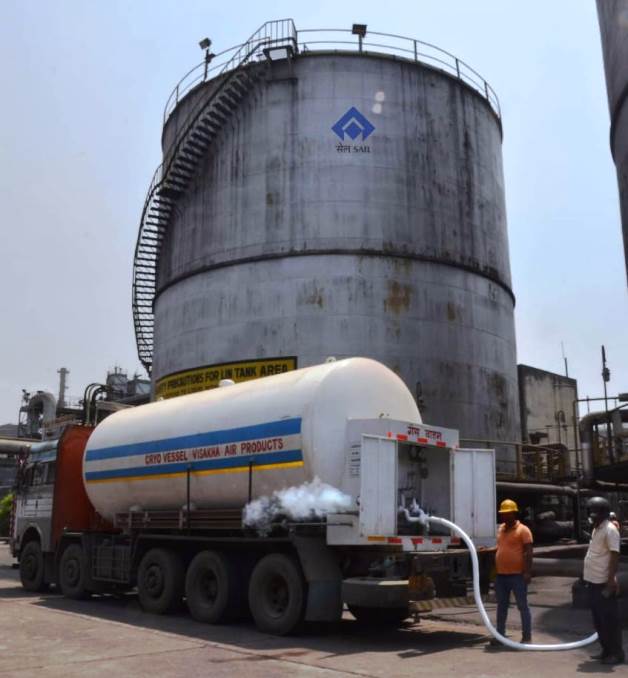The mathematical model developed by the Committee has been integrated with public domain data from https://covid19india.org, and can be accessed at https://sair.iitgoa.ac.in/
 KRC TIMES Desk
KRC TIMES Desk
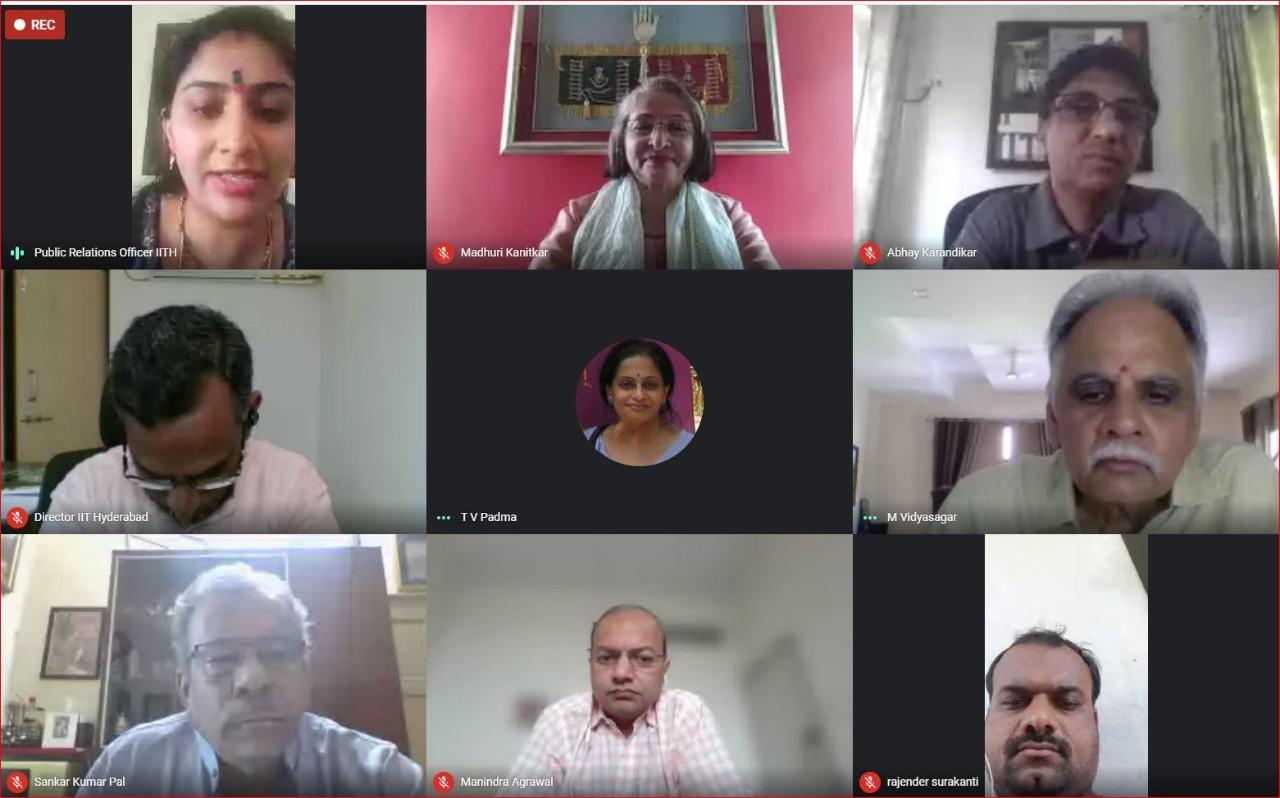
By ‘COVID-19 India National Supermodel’ Committee”
Prof. M. Vidyasagar (IIT Hyderabad), Prof. Manindra Agrawal (IIT Kanpur), Lt. Gen. Madhuri Kanitkar (HQ IDS MoD), Prof. Biman Bagchi (IISc), Prof. Arup Bose (ISI Kolkata), Prof. Gagandeep Kang (CMC Vellore) and Prof. Sankar K. Pal (ISI Kolkata)
Background
As elsewhere in the world, India has been beset by the SARS-CoV-2 virus, leading to the COVID-19 pandemic. Several arms of the Government of India initiated activities to analyze and predict the spread of the pandemic, and to recommend policy interventions. As a part of this response, the Department of Science and Technology (DST) appointed a committee of experts to collate the collective expertise of the Indian scientific community, and to arrive at a “COVID-19 India National Supermodel.”
The Terms of Reference included making projections about the progress of the disease over time, both at national and state levels. In addition, the Committee assessed the impact of the lockdown measures that were put in place at the beginning of the pandemic, specifically, whether they reduced the peak load on our healthcare system, and thus gave time to build on our capacity and capability to effectively manage the pandemic. A part of this was to assess the impact of migrant labourers travelling back to their places of origin in May and June. While the Committee will continue its work, it was felt that some of the findings of the committee might be of interest to the public at large.
Conclusions
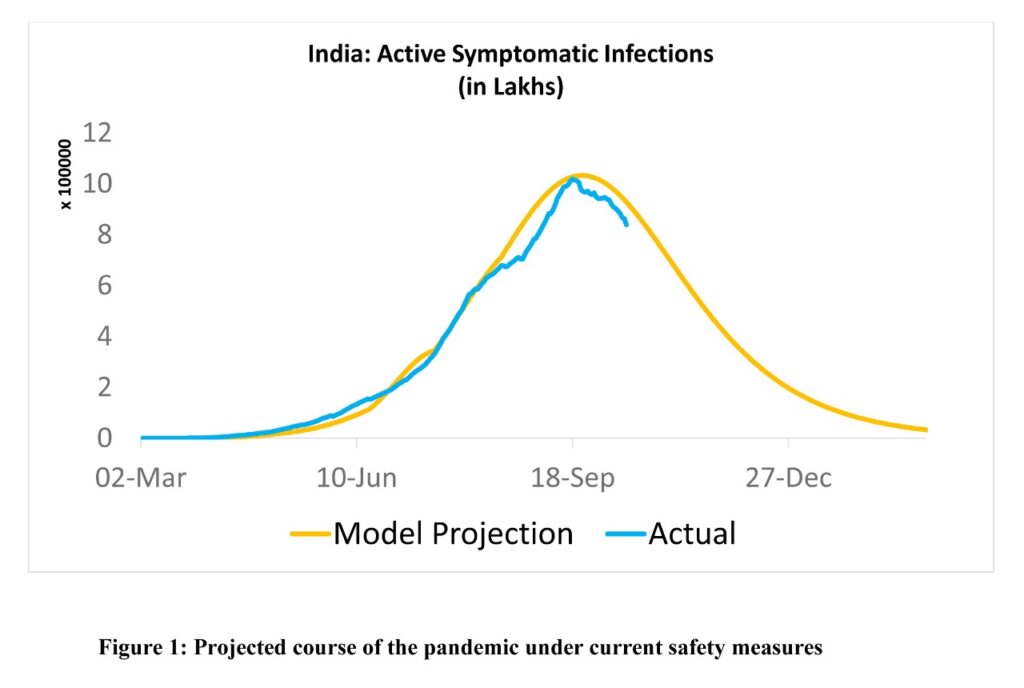
Based on the mathematical model developed by the Committee, the following conclusions have emerged about the course of the pandemic (see Figures 1 and 2):
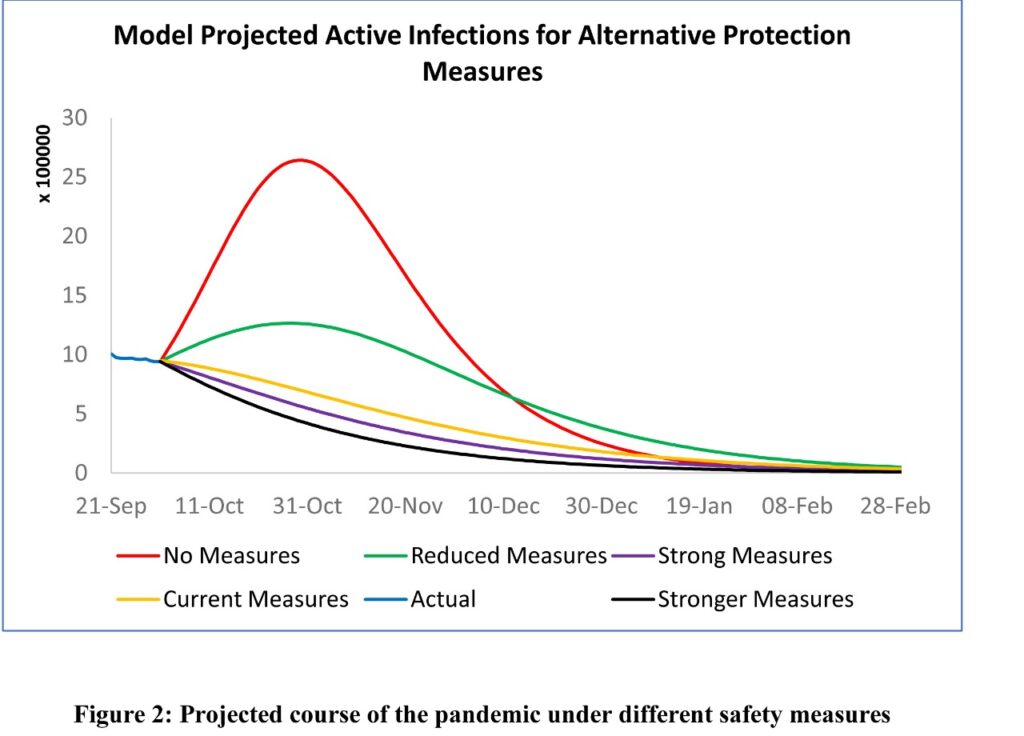
However, this number will start rising again if proper practices of masking, disinfecting, tracing, and quarantine are not followed (Figure 2). The downward trend will continue only if we continue with above practices.
In addition, based on temporal profiles of analyses done for Bihar and UP, the Committee concluded that the impact of labour migration on the total number of infections in these states was minimal (see Figure 3). This observation indicates the success of quarantine strategies adopted for the returning migrants.
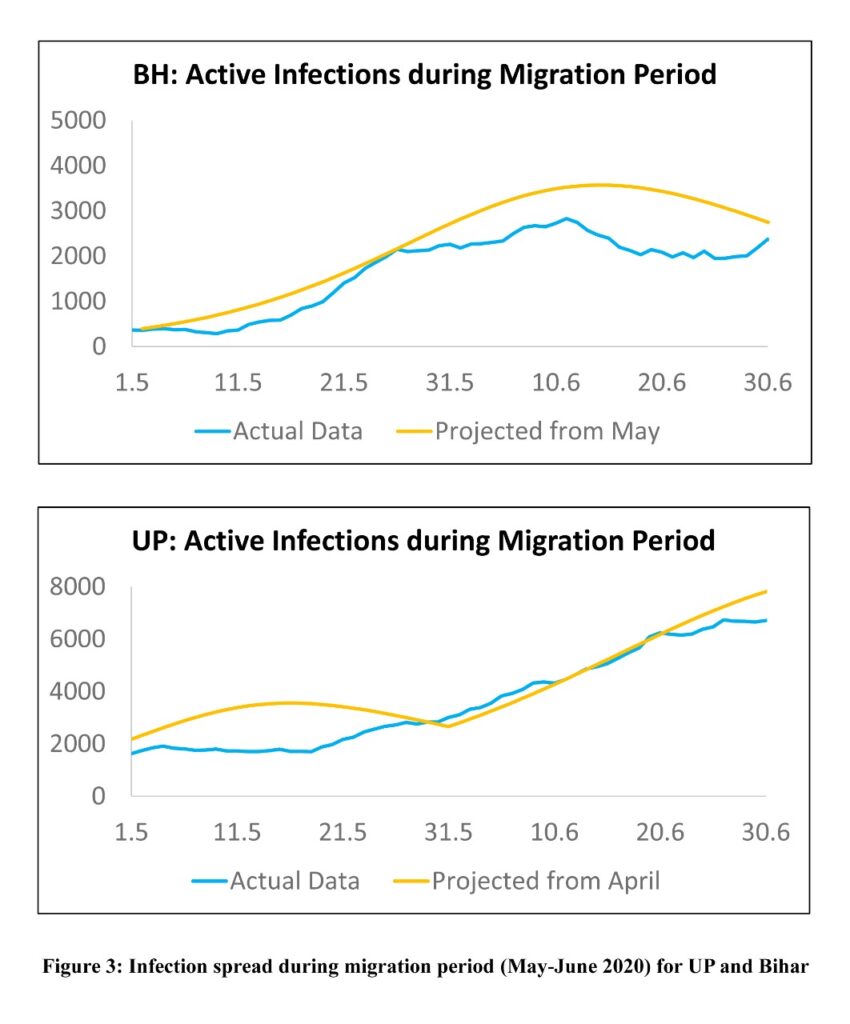
The Committee also simulated what would have happened in hypothetical alternative scenarios with regard to the timing of lockdown regime. The following conclusions emerged (Figure 4):
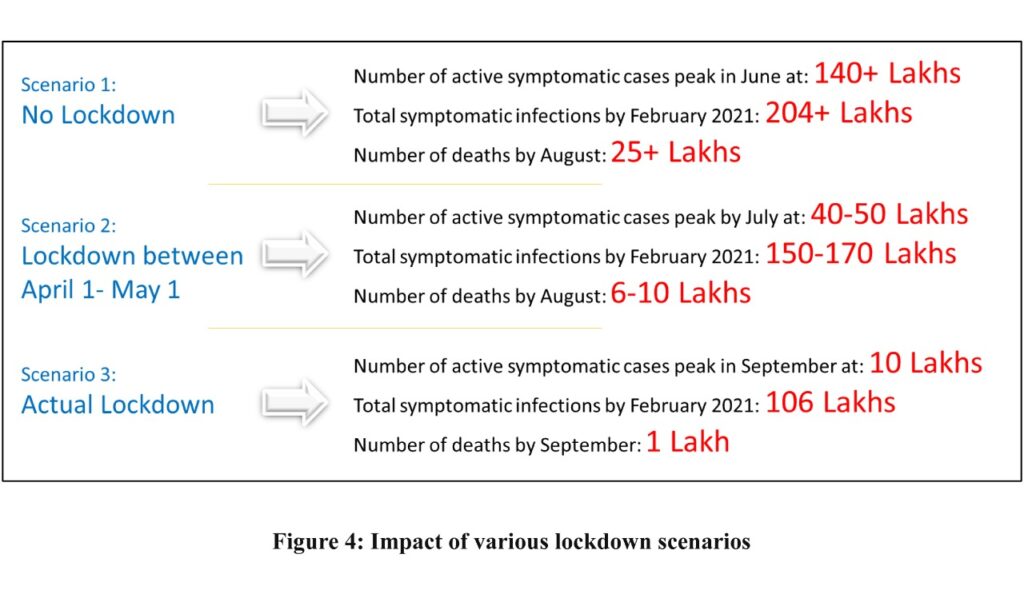
• With no lockdown, the pandemic would have hit India very hard, with a peak load of 140+ lakh cases arriving in June. Given our lack of preparedness back then, the healthcare system would have been overwhelmed, leading to many additional deaths.
• Had India waited until May to impose the lockdown, the peak load of active cases would have been around 50 lakhs by June.
• In actuality, the peak of active cases came in late September at around 10 lakhs. By this time, we were far better equipped to handle the pandemic in terms of diagnostics and vital equipment inventories.
Therefore, the imposition of an early and comprehensive lockdown pushed the peak of cases far into the future and also reduced the peak load on the system. In short, the lockdown “flattened the curve.” An analysis of the actual deaths from the pandemic with various alternative scenarios is also shown in Figure 4. It may be concluded that:
• Without a lockdown the number of deaths in India would have overwhelmed the system within a very short timeframe, and would eventually have crossed 26 lakhs fatalities.
• Imposing the lockdown in May would have reduced deaths to around 10 lakhs.
• The prompt imposition of the lockdown on March 24 has resulted in deaths being around 1 lakh till date.
State-Wide Analysis
The mathematical model developed by the Committee has been integrated with public domain data from https://covid19india.org, and can be accessed at https://sair.iitgoa.ac.in/. Using the drop-down menu, users can generate plots and look at predictions for India as a whole, or for individual states of their interest.
Recommendations
The imposition of various safety protocols such as wearing masks, social distancing etc., together with a comprehensive lockdown has allowed India to fare better than many other countries. India has one-sixth of the world’s population (one-fifth excluding China), and onesixth of the reported cases. However, India accounts for only 10% of the world’s deaths, and its case fatality rate of less than 2% is among the lowest in the world (see https://coronavirus.jhu.edu/map.html for a worldwide comparison). India’s fatality rate per million is about a tenth that of the European countries and the USA.
At the same time, we do not yet know the weather-specific perturbations of this pandemic (in general, viruses tend to be more active in colder environment) and the effects of possible future mutations in the virus. In view of this and the scenarios analysed, as well as the upcoming festival season the committee strongly recommends that:
• The existing personal safety protocols need to continue in full measure. Otherwise we will see a sharp rise in infections. Avoiding congestion especially in closed spaces and special care of those above 65 years and children is even more significant. Personnel with co-morbidities need to be extra cautious.
• Fresh lockdowns should not be imposed on a district and state wide levels, unless there is imminent danger of the healthcare facilities being overwhelmed.
The Committee will continue to work on many other issues concerning the current pandemic forecasting, as well as continue to develop robust models for the future pandemics if any so that the decision-making processes are fast tracked when the need arises without a lag time.
The views expressed are solely those of the Committee of Experts; they are based on a mathematical model described at https://www.iith.ac.in/~m_vidyasagar/arXiv/SuperModel.pdf.



